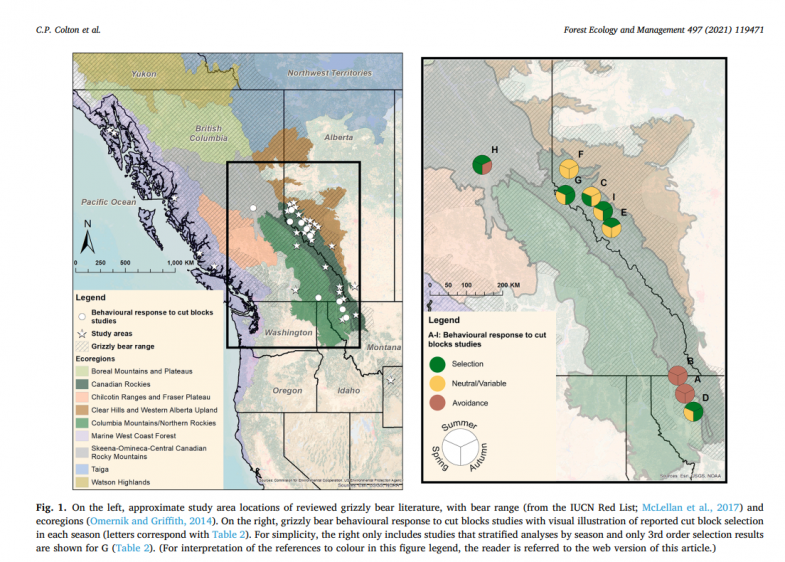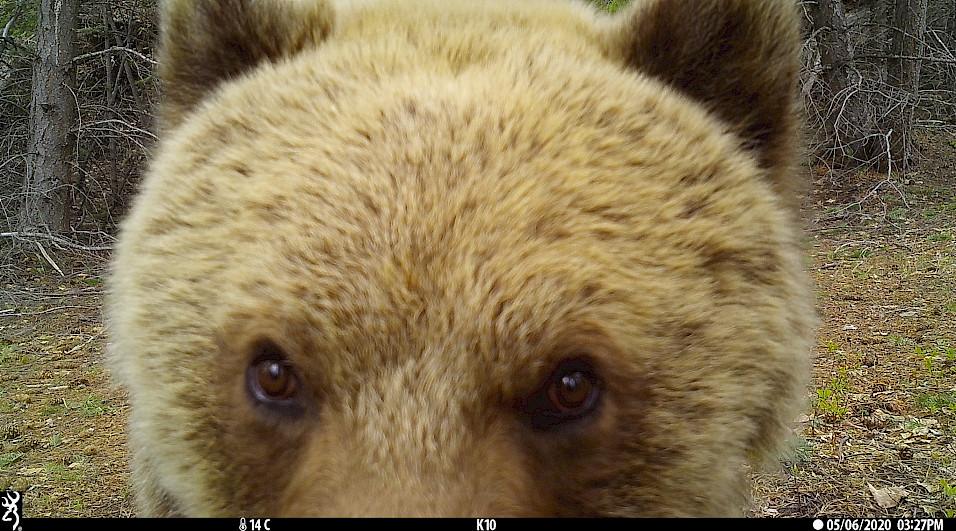Outside of protected areas, forestry is the most common land use practice in remaining grizzly bear habitat of western North America. Forestry service roads are known to have negative effects on grizzly bear populations, but less is known about other aspects of forestry, specifically the harvesting of trees for timber production. Several empirical studies have used telemetry data to evaluate how grizzly bears respond to the creation of cut blocks, so we reviewed these and other pieces of literature to better understand the general patterns of how grizzly bears respond to forest harvest. We were most interested in investigating whether there is any evidence of grizzly bears using cut blocks, and if so, why?
Spoiler alert, it depends! All of the studies we reviewed found some evidence of grizzly bears using cut blocks across all seasons of the year that bears are active (spring, summer, fall). We also evaluated whether they selected cut blocks, which is a habitat use metric derived from use and availability data (i.e. do grizzly bears use cut blocks more then they are available, and hence, do they actively chose to use cut blocks?). Cut block selection was highly variable across seasons and ecoregions, and we concluded that while selection was common (especially in summer), when and where grizzly bears select cut blocks is extremely context dependent.
So why might grizzly bears use cut blocks? With fire suppression reducing the amount of open forest in much of grizzly bear habitat, there is evidence that bears use cut blocks as a surrogate for natural forest openings in certain areas, and at certain times of the year. Berry producing shrubs in cut blocks may increase fruit production relative to forested counterparts, which is a vital food source for bears bulking up for winter! However, if these areas also have a high road density, there is potential for an elevated mortality risk, and thus an ecological trap.

Forestry and grizzly bears have complex relationships, and more empirical research is needed in different regions to understand how these patterns may vary in space and time. For now, forest managers can do things like: reduce scarification and other mechanical site preparation techniques that damage berry producing shrubs, strategically time road closures so that cut blocks producing berries can be safely used by bears, and plan harvesting regimes so that the creation of roads is minimized!

I am trying to fill some of the remaining gaps in grizzly-forestry literature by using camera traps to evaluate whether forestry influences grizzly bear habitat use in southwest BC! I am currently in the analysis stage but look forward to sharing my results in the future!
Written by Chris Colton, MSc Student in the WildCo Lab and the Integrated Remote Sensing Studio at UBC